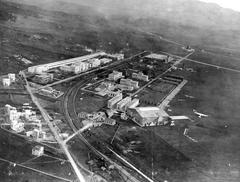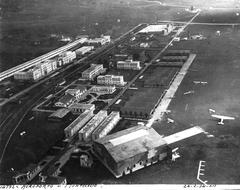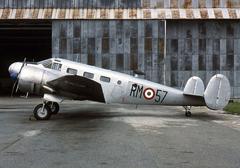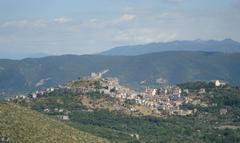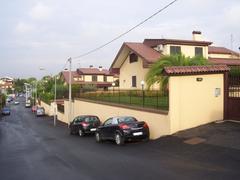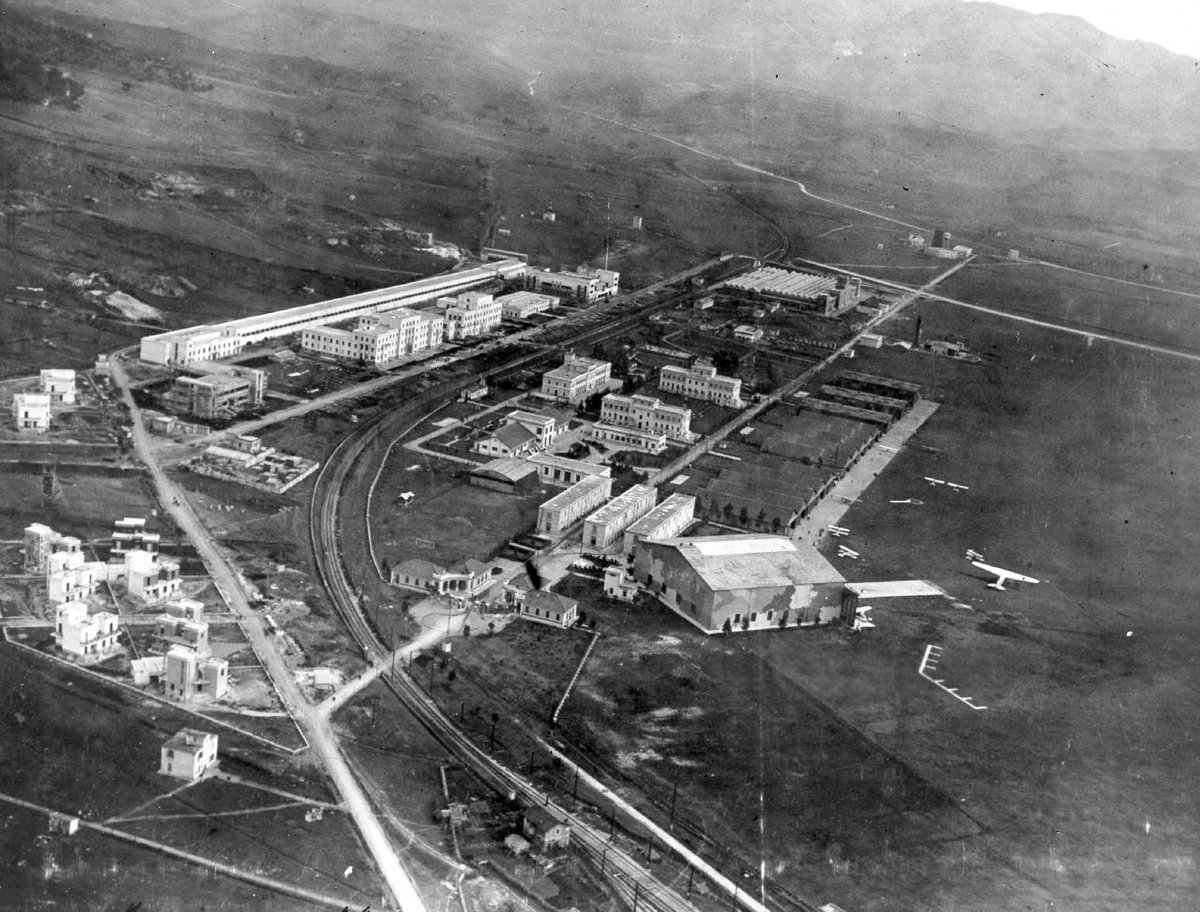
Guidonia Airport Visiting Hours, Tickets, and Travel Guide in Guidonia Montecelio, Italy
Date: 14/06/2025
Introduction
Guidonia Airport—officially known as Aeroporto di Guidonia or Guidonia Air Base—is a landmark of Italian military aviation, located northeast of Rome in Guidonia Montecelio. Established in the early 20th century, it has played a pivotal role in aeronautical research, pilot training, and technological advancements for the Italian Air Force. While it operates as an active military facility today, limiting public access, special events and guided tours occasionally open its gates to enthusiasts, historians, and travelers.
This guide details everything you need to know about visiting Guidonia Airport: historical context, access and ticketing, practical travel tips, nearby attractions including Tivoli and Rome, safety, amenities, and accessibility. Whether your interest lies in aviation, architecture, or the cultural fabric of Lazio, this article equips you to make the most of your visit.
For the most current updates, always consult official sources like the Italian Air Force official website, Audiala travel guides, and scholarly works (Taylor & Francis).
Table of Contents
- Introduction
- Historical Overview
- Significance and Urban Impact
- Access, Visiting Hours, and Tickets
- Practical Travel Tips
- Accessibility and Visitor Services
- Nearby Attractions and Day Trips
- Safety and Local Etiquette
- Frequently Asked Questions (FAQ)
- Conclusion and Recommendations
- References
Historical Overview
Origins and Early Development
Guidonia Airport’s history began in the late 1920s, when the Italian government established the DSSE (Direzione Superiore Studi ed Esperienze), an advanced center for aeronautical research. Its proximity to Rome combined with ample space for aeronautical activities made it an ideal location for both military and scientific pursuits (Taylor & Francis).
The Fascist Era and the “City of the Air”
In 1937, the area was officially designated as the “City of the Air” (Città dell’Aria), a purpose-built town reflecting the rationalist architecture and grand ambitions of Fascist Italy. The site quickly became a hub for military training, aircraft testing, and aeronautical research, shaping Guidonia Montecelio’s identity and urban landscape (Taylor & Francis).
World War II and Postwar Evolution
During World War II, Guidonia played a strategic role in Italian air operations and research, making it a target during Allied bombing raids (Mapcarta). After the war, it adapted to peacetime needs and remained a core facility for the Italian Air Force, contributing to Italy’s aeronautical recovery and modernization.
Ongoing Role in Italian Aviation
Today, Guidonia Airport serves primarily military and research purposes, yet remains an important symbol of Italy’s aviation achievements and urban transformation (Simple Flying). It continues to house military units and research centers, maintaining its legacy as a cornerstone of Italian aviation.
Significance and Urban Impact
Guidonia Airport catalyzed the transformation of Guidonia Montecelio from a rural area to a thriving town, leaving a lasting imprint through its rationalist architecture and aviation-centered economy. The airport’s presence has fostered community development, employment, and technological innovation, making it a case study in the interplay between urban planning and aviation history (Taylor & Francis).
Access, Visiting Hours, and Tickets
General Access and Restrictions
As an active military installation, Guidonia Airport is not open to the public for general visits. Civilian access is strictly limited to special occasions—such as air shows, open days, or educational tours—announced in advance via official channels (Italian Air Force Official Site).
Visiting Hours and Ticketing
- Visiting Hours: There are no regular public visiting hours. Special events have specific opening times, typically between 9:00 AM and 5:00 PM.
- Tickets: Entry to public events may require tickets, which are announced and distributed through the Italian Air Force, municipality, or event organizers. These should be booked in advance due to limited availability.
- Guided Tours: Occasionally organized for educational groups and aviation enthusiasts, tours require prior arrangement and are subject to security screening.
Always check the latest updates through the Italian Air Force Events page, Audiala, or local tourism offices.
Getting There
- By Train: Regional trains connect Rome’s Tiburtina station to Guidonia Montecelio in about 25 minutes (WildTrips).
- By Bus: Cotral and Schiappa buses run from Rome’s Tiburtina to Guidonia Montecelio (~45 minutes).
- By Car: Take the A24 motorway; parking is available in town but not at the airport itself (WildTrips).
For special events, shuttle service may be provided from town centers or Rome.
Facilities and Security
- No Commercial Amenities: As a military base, there are no passenger lounges, shops, or restaurants.
- Event Facilities: Temporary amenities (restrooms, info desks) are available during public events.
- Security: All visitors are subject to ID checks and security protocols. Unauthorized entry is strictly prohibited.
- Photography: Permitted only in designated areas and with prior permission.
Practical Travel Tips
Local Transportation
- Buses: Connect the town and nearby areas.
- Taxis: Available locally or via mobile apps.
- Car Rental: Recommended for flexibility (MamaLovesItaly).
- Cycling/Walking: The town is pedestrian-friendly.
Accommodation Options
- Guidonia Montecelio: Offers hotels, guesthouses, and apartments—generally more affordable than Rome.
- Tivoli and Rome: Provide a wider range of options (WildTrips).
- Booking: Reserve early, especially around special events (Booking.com).
Dining and Amenities
- Cuisine: Try local dishes such as Porchetta and Cacio e Pepe (Audiala).
- Shopping: Supermarkets and specialty stores are available in town.
- ATMs: Widely accessible.
Accessibility and Visitor Services
- Disability Access: Public transport is partially accessible; older vehicles may not be. The airport lacks standard accessibility features due to its military nature.
- Language: Italian is the primary language; some English is spoken, mostly by younger people or in tourism services (Audiala).
- Connectivity: Wi-Fi is available in hotels and cafes; consider a local SIM card for mobile coverage.
- Health and Safety: Pharmacies and clinics are in town; major hospitals are in Rome. Emergency number: 112.
Nearby Attractions and Day Trips
- Guidonia Montecelio: Explore historic churches, monuments, and a lively town center (Audiala).
- Montecelio: A medieval village with panoramic views.
- Tivoli: Renowned for Villa d’Este and Hadrian’s Villa—both UNESCO World Heritage Sites (WildTrips).
- Nature: Riserva Naturale Monte Catillo and Veio Regional Park are nearby (The Crazy Tourist).
- Rome: Just a short train or car ride away for endless cultural and historical sites.
Safety and Local Etiquette
- General Safety: Guidonia Montecelio is considered safe, with standard travel precautions advised (WildTrips).
- Airport Security: Strict at all times.
- Etiquette: Dress modestly in churches and official places; tipping is appreciated but not obligatory.
- Driving: International Driving Permit recommended for non-EU visitors; obey all traffic laws (MamaLovesItaly).
Frequently Asked Questions (FAQ)
Q: Can I visit Guidonia Airport at any time?
A: No. Public access is strictly limited to special events or prior arrangement.
Q: How do I get tickets for air shows or guided tours?
A: Tickets are announced on official military or municipality websites. Early booking is essential.
Q: Are there commercial flights from Guidonia Airport?
A: No, it is exclusively a military base.
Q: What are the main attractions nearby?
A: Montecelio, Tivoli’s Villa d’Este and Hadrian’s Villa, and Rome.
Q: Is the airport accessible by public transport?
A: The town is accessible by train and bus, but the airport itself is not on public transport routes. Use taxis or event shuttles when available.
Q: Is photography allowed?
A: Only in designated areas and with permission, especially during public events.
Conclusion and Recommendations
Guidonia Airport stands as a testament to Italy’s aviation legacy, technological progress, and architectural ambition. While everyday access is restricted, special events and tours offer rare opportunities to experience its historical and cultural significance. Pair your visit with exploration of Guidonia Montecelio, Tivoli, and Rome to enrich your understanding of the region’s heritage.
For up-to-date event schedules, tickets, and travel tips:
- Visit the Italian Air Force Official Site
- Explore Audiala’s Guidonia Montecelio travel guide
- Consult local tourism offices and municipality’s official site
For personalized travel assistance and the latest news, download the Audiala app and follow us on social media.
References
- Guidonia Airport: Visiting Hours, Tickets, and Historical Insights into Rome’s Aviation Landmark, Taylor & Francis
- Guidonia Airport History, Visitor Information, and Nearby Rome Attractions, Mapcarta
- Guidonia Airport Visiting Hours, Tours, and Nearby Attractions, Italian Air Force Official Site
- Visiting Guidonia Airport: Hours, Access, and Nearby Attractions in Guidonia Montecelio, Audiala
- The World Pursuit Italy Travel Tips
- Mama Loves Italy Travel Tips
- WildTrips Guidonia Montecelio
- The Crazy Tourist: 15 Best Things to Do in Guidonia Montecelio
- Rome Airports Official
